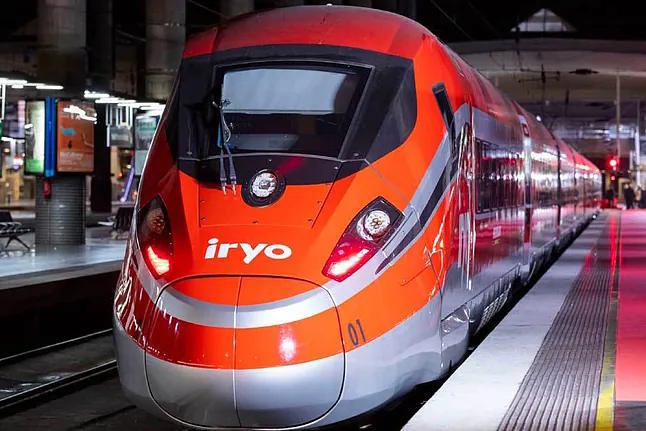Spain has become a strategic piece on Hitachi Rail's global chessboard. The railway division of the Japanese giant has strengthened its presence in our country after acquiring Thales' transportation business. Their intention is clear: to compete at the highest level in major contracts for high-speed trains, urban transportation, track signaling, and control systems.
During a media briefing, Adolfo Aguilar Delgado, Director of Sales, Marketing, Business Development, and Communication at Hitachi Rail in Spain, explained that "the Spanish market is a priority due to its investment volume and technological maturity." The company already has over 1,000 employees, 18 offices, and industrial presence in cities like Córdoba, Cantabria, Bilbao, and Zaragoza.
In this context, the Spanish market - the second largest in the world in terms of high-speed rail lines after China - represents a particularly attractive opportunity for consortia offering turnkey solutions in railway infrastructure. Between 2025 and 2028, an investment close to 24.2 billion euros is estimated, with around 8 billion coming from the European Union's Next Generation funds, which are expected to be tendered throughout this year.
This positive scenario of public investment, however, is conditioned by the uncertainty of the current geopolitical context, the risk of a recession stemming from a potential trade war, and the growing battle for talent. All this in an environment marked by increasingly intense competition among major industry players.
Hitachi Rail is not a newcomer. It has been operating in Spain for years - through subsidiaries like Ansaldo, which won the Madrid-Lleida Ave section - but its definitive integration under the Japanese umbrella marks a new phase. In 2025 alone, Adif foresees tenders worth up to 5 billion euros. Hitachi aims to be part of all of them.
Currently, it supplies high-speed trains to Iryo (20 units delivered and three more in production). Additionally, it has secured a contract to provide maintenance for these units for 30 years. But it aspires to more: new high-speed lines and Ave branches, metros like the one in Bilbao, and track signaling and control systems. "We have a high-quality product that can compete perfectly in the national market," Aguilar stated.
The strategy goes beyond commercial aspects. Hitachi advocates for its model as an integrator of green and digital solutions, from train manufacturing to cybersecurity and railway traffic management. The 91% of its suppliers are in Spain, exporting talent and technology from here to ambitious projects like Saudi Arabia's Neom, California's high-speed rail, new railway projects in Mexico, or Egypt's network.
The challenge is significant: Caf, Alstom, Siemens, and other giants vie for each contract. However, Hitachi relies on its financial strength and ability to offer proven turnkey solutions. In a context of ecological transition, European funds, and denser cities, the train - according to Aguilar - is destined to play a leading role in this new scenario.
